Orally Disintegrating Tablets Using Starch and Fructose
The authors demonstrated that ODTs can be obtained by direct compression of a mixture of starch, fructose, and SMCC.
An estimated 35% of the general population suffers from dysphagia (i.e., difficulty in swallowing), including 30–40% of the elderly and 18–22% of patients in long-term care (1). Moreover, solid-dosage forms that are easy to swallow may be necessary for specific patient groups such as geriatric, pediatric, and traveling patients who may not have ready access to water (2). Orally disintegrating tablets (ODTs) were developed to target these special patient populations who may suffer from difficulties when swallowing a solid-dosage form. The US Food and Drug Administration guidance for industry defines ODTs as solid-dosage forms that disintegrate rapidly, usually within a matter of seconds when placed upon the tongue. It also recommends the in vitro disintegration time be measured by means of a United States Pharmacopeia (USP) disintegration apparatus and be equal or less than 30 s (3).
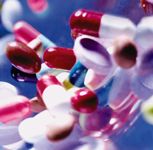
PHIL ASHLEY, DIGITAL VISION, GETTY IMAGES
Benefits of ODTs
Accurate dosing, ease of manufacture, good stability, small size for packaging, and easy handling by patients are characteristics of solid-dosage forms (4, 5). On the other hand, liquid-dosage form's advantages include: reduced risk of suffocation, ease of swallowing, and simplified administration (6). Since OTDs are dosed as a solid and dissolve quickly into a liquid in the mouth, this dosage form exhibits the advantages of both solid and liquid preparations (7). ODTs also do not require additional water intake and provide more rapid availability of drug for absorption and circulation starting in the buccal mucosa. Buccal mucosa absorption translates into bypass of first pass metabolism and more rapid onset of drug action. Even though most of the research published so far has mainly focused on shortening disintegration times, some authors have reported formulations that modify the release of the drug while preserving a fast disintegration time (8, 9). The many advantages of ODTs make them an interesting dosage form with many research and development opportunities.
Over the years, several technologies and manufacturing processes have been developed for the production of ODTs. Technologies such as Zydis (Cardinal Health, Dublin, OH) and Quicksolv (Janssen Pharmaceutica, Beerse, Belgium) rely on lyophilization for the manufacture of the ODT (7, 10). WOWTAB (Yamanouchi Pharma Technologies, Norman, OK), OraSolv, and DuraSolv (Cima Labs, Eden Prairie, MN) are some examples of technologies that are based on compaction processes (11–13). However, most of these processes face the challenge of achieving rapid disintegration times, while obtaining final dosage forms that can withstand subsequent packaging and shipping. Different approaches have been used to overcome this major problem in the development of ODTs. Some include the development of special packaging devices that reduce the mechanical impact on the dosage form. Other strategies include developing granules suitable for compaction of ODTs, or tableting at low-compression forces and applying after-treatments to the resulting tablets (14). These solutions frequently lead to multistep processes that may require additional equipment, resulting in high cost of production.
The research presented in this article details the development of a suitable direct compression method for the manufacture of ODTs, incurring no further processing or the use of additional equipment. The proper combination of excipients tableted at determined compression forces allowed us to successfully obtain ODTs.
Materials and methods
Materials. Tate & Lyle Ingredients (Decatur, IL) donated starch and fructose. Microcrystalline cellulose (MCC) was obtained from FMC BioPolymer (Newark, DE). JRS Pharma (Rosenberg, Germany) donated silicified microcrystalline cellulose (SMCC) in three different bulk grades. Based on bulk densities (BD) and average particle sizes (APS) the grades were labeled as SMCC1 with an APS of 60 μm and BD of 0.25–0.37 g/cm3, SMCC2 an APS of 110 μm and BD of 0.25–0.37g/cm3, and SMCC3 an APS of 110 μm and BD of 0.35–0.50g/cm3. Caffeine and sodium phosphate monobasic were obtained from Sigma-Aldrich (St. Louis, MO). Spectrum (Gardena, CA) provided magnesium stearate and talc.
Manufacture of tablets. To study the effect of type and concentration of the binder, the authors prepared different formulations containing SMCC1, SMCC2, SMCC3, or MCC, and labeled them as F1 to F12 as shown in Table I. After selection of the most suitable binding agent and the most effective concentration for disintegration, formulations F13 to F17 were used to determine the optimal fast dissolving excipient combination. With the exception of magnesium stearate and talc, all ingredients weighed for a 300-g batch size were sieved through an 850 μm mesh screen. A tumbling mixer was used to blend the ingredients for 20 min at 25 rev/min. Following this initial period of mixing, magnesium stearate (0.5% w/w) and talc (0.5% w/w) were added, and the blend was mixed for an additional 5 min. A Stokes Dual Pressure Press Model 2 (Compression Components & Service, Warminster, PA) fitted with an 1.0-cm flat-faced beveled edged punch and dye set (Natoli Engineering, Saint Charles, MO) was used to tablet each of the prepared formulations into 400 mg tablets. Three tablet batches were prepared per formulation, one in each of three average hardness ranges: low (3.5–4.5 kP), medium (4.6–5.5 kP), and high (5.6–7.0 kP).
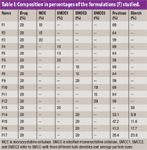
Table I: Composition in percentages of the formulations (F) studied.
Physical testing. To determine weight uniformity of the batches, 10 tablets were weighed and the mean and standard deviation was determined. A VK 200 Tablet Hardness Tester (Varian, Palo Alto, CA) was used to determine the tablet hardness, for the average of 10 tablets. A micrometer was used to measure thickness and diameter of 10 tablets. A friabilator based on the specifications provided in the US Pharmacopeia was used to measure the friability of the tablet batches. The samples consisted of a number of tablets with a combined weight as close to 6.5 g as possible. Tablets were dedusted thoroughly before and after 100 rotations and prior to weighing, by dusting through an 850 μm mesh screen. The friability was obtained from the percentage weight lost due to abrasion and tablet fracture.
Porosity. Percent relative porosity (ε) was obtained using the relationship between apparent density (ρapp) and true density (ρtrue) as shown in Equation 1 (1):

Briefly, the apparent density was calculated from average values for thickness and diameter of 10 tablets. An AccuPyc 1330 Pycnometer (Micromeritics Instrument, Norcross, GA) was used to measure true density. The same tablets used in the apparent density evaluation (n = 10) were placed inside the measurement chamber of the pycnometer, this was purged with helium four times at 20 psi, before average true density determination (n = 3) at the same pressure.
Disintegration test. A USP disintegration test apparatus was used to establish disintegration times in 600 mL phosphate buffer pH 6.8 at 37±2°C. The USP defines the disintegration time as the time required for the last of six tablets to disintegrate. According to the FDA guidance on ODTs, to be classified as an ODT, the last tablet should disintegrate in 30 s or less (3).
Drug-content uniformity. To study the content uniformity of selected tablet batches, the authors determined the caffeine content of 10 tablets. Each tablet was dissolved in 200 mL of phosphate buffer (pH = 6.8) by means of a magnetic stirrer. After total dissolution, a 1-mL sample was filtered through a 10-μm pore size filter, and assayed for caffeine in a μQuant UV-Vis spectrophotometer (BIO-TEK Instruments, Winooski, VT) set at a wavelength of 273 nm. The average drug content and standard deviation were obtained from 10 tablets.
Particle sizing. A Malvern Mastersizer X (Malvern Instruments, Worcestershire, UK) was used to determine the median particle-size distribution of fructose and starch. Powders were dispersed in cyclohexane (refractive index 1.4235) and 10 mL were added to a small-volume dispersion cell before measurement.
Results and discussion
Effect of the binder. More rapid disintegration times where obtained for 20% w/w of SMCC1 compared to when nonsilicified MCC was used at a similar tablet hardness (see Figure 1). In both cases, increasing the binder concentration decreased the disintegration times. Additionally, a higher porosity was observed when tablets exhibited low hardness (data not shown). A prior investigation of SMCC and MCC in comparable grades established very similar chemical and physical properties (15). However, improved mechanical properties make SMCC a superior tablet binder than MCC when used at similar concentrations (16, 17). The authors found that an increased tablet binder concentration decreased the disintegration times of SMCC1 tablets (see Figure 1). The SMCC enhanced compaction properties because of the presence of silicon dioxide, which is located mostly on the surface and occasionally embedded in MCC particles (18, 19). It is believed that this silicified form of MCC has brittle fracture properties, which enhance compaction when compared to native MCC (16). Moreover, Sherwood and Becker reported that MCC exhibited more sensitivity to the effect of lubricant than SMCC (20). The MCC tablets exhibited poor water penetration and slower disintegration times (see Figure 1). The MCC displays a high sensitivity to the effect of magnesium stearate inclusion, as observed by the high friability values observed with the MCC containing tablets. Previous work has suggested that the lubricant covers the surface of the powder particles, decreasing the mechanical properties of the tablet after compaction (21).
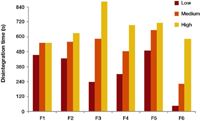
Figure 1: Effect of the type of the binder over disintegration time. MCC is microcrystalline cellulose and SMCC is silicified microcrystalline cellulose. SMCC1 is SMCC with an average particle size of 60 μm and a bulk density of 0.25â0.37 g/cm3. F1: 10% MCC; F2: 15% MCC; F3: 20% MCC; F4: 10% SMCC1; F5: 15% SMCC1; and F6: 20% SMCC1. (ALL FIGURES ARE COURTESY OF THE AUTHORS)
For all SMCC grades, increased tablet binder concentration decreased disintegration time (see Figure 2). Furthermore, increased amounts of SMCC1, SMCC2, and SMCC3 increased the porosity of the tablet batches (see Table II). Tablets that showed the highest porosity (14.88–17.09%) exhibited disintegration times of less than one minute (F6, F9, and F12). Most of the tablets in the high (5.6–6.8 kP) and medium (4.6 kP–5.5 kP) ranges of tablet hardness displayed acceptable friability values. With the exception of F9, at low tablet hardness (3.5–4.5 kP), increasing the concentration of binder decreased the tablet friability. The high friability values observed in F5, F7, F10, F11, and F12 are a consequence of tablets capping during the friability measurement, which resulted in a dramatic weight loss over the standard 5-min test period. This problem was seen when low concentration of SMCC was used (10% w/w and 15% w/w for all grades). It was also correlated with an increase in compression force, since it was observed only at high tablet hardness.
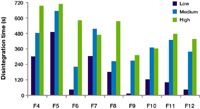
Figure 2: Effect of hardness and binder concentration on disintegration time for SMCC1 Formulation (F)4âF6), SMCC2 (F7âF9), and SMCC3 (F10âF12). SMCC is silicified microcrystalline cellulose. SMCC1 is SMCC with an average particle size (APS) of 60 μm and a bulk density (BD) of 0.25â0.37 g/cm3. SMCC2has an APS of 110 μm and BD of 0.25â0.37g/cm3, and SMCC3 has an APS of 110 μm and BD of 0.35â0.50g/cm3.
The differences observed among SMCC grades can be attributed to their physical properties. SMCC1 is a binder that was developed to be used in wet-granulation processes, while SMCC2 was developed for direct compression. Even though SMCC1 has good compaction properties, its small particle-size distribution has been reported to limit its flow characteristics (20). Furthermore, increased tablet hardness dramatically increased the disintegration times (see Figure 2), which ultimately limits usefulness of SMCC1 as a tablet binder in the formulation of ODTs. Mužíková and Nováková reported that SMCC2 showed better mechanical characteristics than its high density analogous, SMCC3 (21). This conclusion was supported by our results, where the best disintegration characteristics, friability, and porosity, were obtained for the SMCC2 grade, specifically at the high concentration (20% w/w) and lowest tablet hardness (see Figure 2 and Table II).

Table II: Porosity (%) and friability (%) values for formulations (F) containing SMCC1, SMCC2, and SMCC3 exhibiting low, medium, and high tablet hardness.
The effect of the disintegrant. The variation of disintegration times observed in Figure 3 illustrates the relationship that exists between compression force and porosity when fructose is used (F6) (see Table III). High values of hardness are correlated with high compression forces applied during the tableting process and reduced porosity of the tablets (F6 in Table 3). Low porosity retards the penetration of the water front during disintegration, which ultimately results in slower disintegration times. Even though porosity usually depends on the type of disintegrant, low-tablet porosity is an indicator of high disintegration times (22).
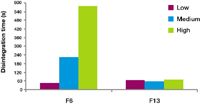
Figure 3: The effect of the type of the disintegrant over disintegration time. Formulation (F)6: fructose; F13: starch.
In this study, when comparing tablets of similar hardness that included either fructose or starch, it was seen that the inclusion of fructose was associated with a lower friability (see Table 3). F6 showed appropriate disintegration times when tablets were compressed to have low tablet hardness (see Figure 3). More importantly, fructose exhibited better flow properties than starch (data not shown), which can be attributed to the difference in particle size and the crystalline nature of fructose (median particle size of 23.14μm and 442.64 μm for starch and fructose respectively, see Figure 4). Fructose has been described as having good flow properties and acceptable compression characteristics when used in its crystalline form (23). The authors found that increased compression force has a significant impact on tablet porosity, friability, and disintegration time. The relatively high porosity (15.98%) observed in low-hardness tablets, together with the high solubility of fructose in water, accounted for rapid disintegration times, and allowed for suitable friability in the upper range (0.79%). Tablets with medium and high-tablet hardness passed the friability test, but with a decreased tablet porosity that accounted for dramatically increased disintegration times (223 and 580 s respectively, see Figure 3).
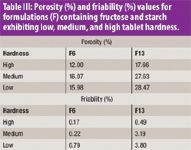
Table III: Porosity (%) and friability (%) values for formulations (F) containing fructose and starch exhibiting low, medium, and high tablet hardness.
On the other hand, starch as the disintegrant allowed for rapid disintegration times regardless of the tablet hardness (51 and 68 s at low- and high-tablet hardness, respectively). However, the poor flow properties of F13 accounted for high variation in tablet weight, porosity, and hardness (data not shown). Rapid disintegration times for tablets that used starch as a disintegrant, have been reported previously even at the low concentrations of 3–15% w/w (24). Although starch is poorly soluble in water, its ability to swell almost immediately by 5–10% of its volume in water makes it a very good disintegrant, allowing for rapid disintegration times. In this study, starch tablets with high hardness retained relatively high porosity and passed the friability test (see Table III). However, the small particle size distribution of starch (see Figure 4) provided poor flow characteristics, which was a major problem when tableting. This may ultimately impose difficulties in later scale up manufacturing processes, where rapid tableting speed and uniform die filling are desired.
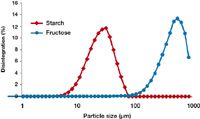
Figure 4: Particle size distribution (%) of starch and fructose dispersed in cyclohexane (refractive index is 1.4235).
Optimization of the formulations. Given the beneficial flow characteristics that fructose showed when compressed alone and the disintegration ability of starch, the authors investigated physical mixtures of both excipients in different ratios. Formulations containing both disintegrants resulted in disintegration times of less than one minute (see Figure 5). Low- and medium-tablet hardness batches showed improved compaction properties since they kept proper friability and porosity. However, as tablet hardness increased, the drug-content variability increased (see Table IV). Ratios of 1:9 and 2:8 starch to fructose showed acceptable disintegration times only when compressed to yield low tablet hardness (see Figure 5). Although these tablets had friability values under 1%, the values were in the upper range, and low-tablet hardness is not desired for further processing steps, such as packaging and storage. A ratio of 3:7 starch to fructose showed very rapid disintegration times at low and medium tablet hardness (12s and 24 s, respectively). A ratio of 4:6 starch to fructose yielded fast disintegration times for low and medium tablet hardness. However, the use of high starch content gave the formulation poor flow characteristics. This translated into heterogeneous die filling in the tablet machine, and variable tablet hardness, which explained the high friability values and the high variability of caffeine content (see Table IV). F16 presented the best characteristics of friability (0.25 %), porosity (16.16 %), disintegration time (24 s), and drug-content uniformity (102.0 ± 2.8 %) at medium tablet hardness.
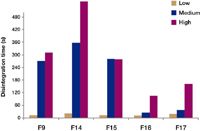
Figure 5: The effect of combining disintegrants in different ratios on disintegration time. Formulation (F)9: 10:0 fructose to starch; F14: 9:1 fructose to starch; F15: 8:2 fructose to starch; F16: 7:3 fructose to starch; and F17: 6:4 fructose to starch.
The high content of fructose improved the blend's flow, and its high solubility allowed for preservation of the desired disintegration time. Furthermore, fructose is well known as a taste masker and a sweetener (25). Since ODTs disintegrate inside the oral cavity, taste-masking is a crucial factor in patient compliance. Starch on the other hand, because of its rapid swelling and the high porosity that it provides to ODTs, improved the disintegration behavior even at medium tablet hardness (see Figure 5). However, the use of starch is limited by the poor flow that it provides to the powder blend, increasing tablet variability in terms of tablet weight, drug-content uniformity, and tablet hardness. All these results showed that the physical mixture of starch and fructose, together with the right choice of binder, allows for an ODT formulation that is optimized for direct compression. F16 displayed the best combination of effects when tableted to provide medium tablet hardness.
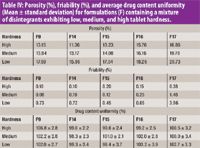
Table IV: Porosity (%), friability (%), and average drug content uniformity (Mean ± standard deviation) for formulations (F) containing a mixture of disintegrants exhibiting low, medium, and high tablet hardness.
Conclusion
Increased concentration of the binder improved the compaction properties of the formulations. The use of SMCC allowed for more rapid disintegration times when compared with MCC. Moreover, because SMCC is less sensitive to the effect of lubricant, the SMCC-containing tablets are less friable and exhibit faster disintegration times. Among the different SMCC grades studied, the high average particle size and low bulk density, SMCC2 was the most effective tablet binder in terms of disintegration and friability. Fructose displayed superior flow characteristics and acceptable disintegration times at low tablet hardness. Furthermore, the use of fructose maintained good uniformity among tablet batches due to its good flow properties. Even though starch exhibited limited flow characteristics, it provided high porosity and rapid disintegration times at low, medium, and high tablet hardness. The mixture of fructose and starch displayed an optimal effect in terms of disintegration time, flow and tablet strength when combined in different ratios. The authors demonstrated that direct compression can be used in the manufacture of ODTs when SMCC was used in conjunction with a mixture of disintegrants that allowed for good flow, low friability and high tablet porosity.
Acknowledgment
Financial and material support for this work from Tate & Lyle Ingredients is gratefully acknowledged. Contribution of materials from JRS Pharma of Germany is also gratefully acknowledged.
Javier O. Morales is a graduate research assistant, Michelle Horng is an undergraduate research assistant, and Jason T. McConville* is an assistant professor at the University of Texas at Austin, College of Pharmacy, 1 University Station A1920, Austin, TX 78712, tel. 512.471.0942, fax 512.471.7474, jtmcconville@mail.utexas.edu. Aubrey M. Gregg is a food technologist at Tate & Lyle Ingredients in Decatur, IL.
*To whom all correspondence should be addressed.
Submitted: Nov. 4, 2009. Accepted: Feb. 18, 2010.
References
1. S. Lindgren and L. Janzon, Med. Clin. North. Am. 77, 3–5 (1993).
2. G. Sandri et al., Am. J. Drug Del. 4 (4), 249–262 (2006).
3. FDA, Guidance for Industry: Orally Disintegrating Tablets (Rockville, MD, Dec. 2008).
4. W. Habib, R. Khankari, and J. Hontz, Crit. Rev. Ther. Drug Carrier Syst. 17 (1), 61–72 (2000).
5. D. Brown, Drug Del. Technol. 3 (6), 58–61 (2003).
6. L.V. Allen, N.G. Popovich, and H.C. Ansel, "Solutions" in Ansel's Pharmaceutical Dosage Forms and Drug Delivery Systems. (Lippincott Williams & Wilkins, Baltimore, MD, 8th ed., 2005), pp. 337–339.
7. H. Seager, J. Pharm. Pharmacol. 50 (4), 375–382 (1998).
8. S.H. Jeong, and K. Park, Int. J. Pharm. 353 (1-2), 195–204 (2008).
9. A. Fini et al., Eur. J. Pharm. Biopharm. 69 (1), 335–341 (2008).
10. D.J. Gole et al., "Preparation of Pharmaceutical and Other Matrix Systems by Solid-State Dissolution," US Patent 5215756, 1993.
11. T. Mizumoto et al., "Tablets Quickly Disintegrating in the Oral Cavity and Process for Producing the Same," US Patent 6589554, 2003.
12. F. Wehling and S. Schuehle, "Base-Coated Acid Particles and EffervescentFormulation Incorporating Same," US Patent 5503846, 1996.
13. R.K. Khankari et al., "Rapidly Dissolving Robust Dosage Form," US Patent 6221392, 2001.
14. Y. Fu, et al., Crit. Rev. Ther. Drug Carrier Syst. 21 (6), 433–76 (2004).
15. M.J. Tobyn et al., Int. J. Pharm. 169 (2), 183–194 (1998).
16. S. Edge et al., Int. J. Pharm. 200 (1), 67–72 (2000).
17. S. Edge et al., Drug Dev. Ind. Pharm. 27 (7), 613–621 (2001).
18. B. van Veen et al. Eur. J. Pharm. Biopharm. 59 (1), 133–138 (2005).
19. S. Edge et al., Pharm. Pharmacol. Comm. 5 (6), 371–376 (1999).
20. B.E. Sherwood et al., Pharm. Tech. 22 (10), 78–88 (1998).
21. J. Mužíková and P. Nováková, Drug Dev. Ind. Pharma. 33 (7), 775–781 (2007).
22. M.K. Kottke and E.M. Rudnic, "Tablet dosage forms," in Modern Pharmaceutics, G.S. Banker and C.T. Rhodes, Eds. (Dekker, New York, NY, 4th ed., 2002), pp. 287–333.
23. K.B. Mulderrig et al., Pharm Technol. 24 (5), 34–44 (2000).
24. M.K. Kottke et al., Drug Dev. Ind. Pharma. 18 (20), 2207–2223 (1992).
25. S.C. Owen, "Fructose," in Handbook of Pharma. Excip., R.C. Rowe, P.J. Sheskey, and P.J. Weller, Eds. (Pharm. Press, London, 5th ed., 2005), pp. 290–292.
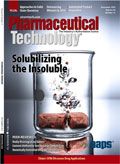
Drug Solutions Podcast: A Closer Look at mRNA in Oncology and Vaccines
April 30th 2024In this episode fo the Drug Solutions Podcast, etherna’s vice-president of Technology and Innovation, Stefaan De Koker, discusses the merits and challenges of using mRNA as the foundation for therapeutics in oncology as well as for vaccines.
Pharmaceutical Tariffs Are Imminent: How Industry is Bracing for Impact
April 16th 2025On April 14, 2025, the Trump Administration launched a national security-driven investigation into pharmaceuticals, a move that will likely result in tariffs being placed on pharmaceutical drugs, ingredients, and other components that are imported from outside of the United States.